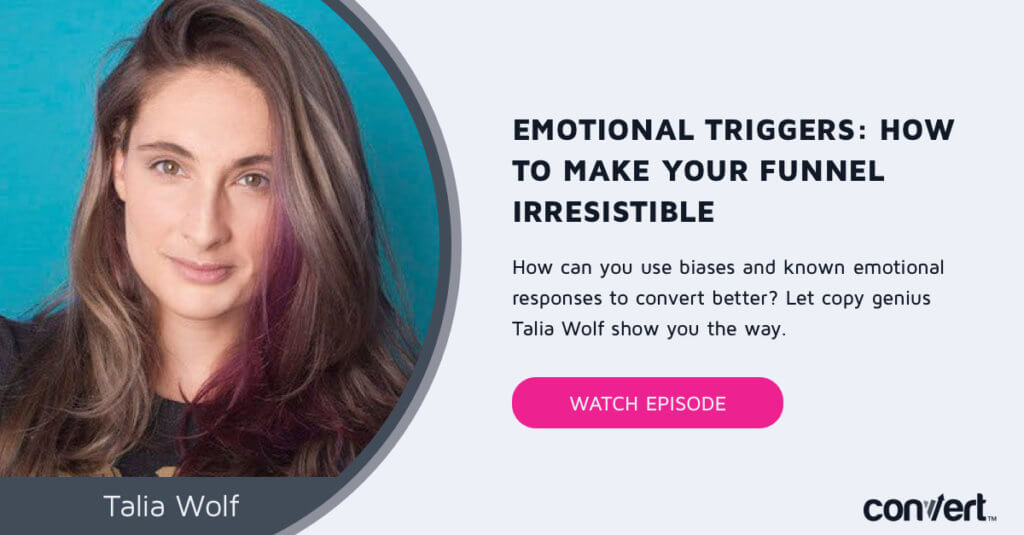5 Tips On Using Persuasion Science In Your Sales Cycle
The sales department plays a critical role in any organization: it converts leads and monetizes them, boosting your cash flow and the company’s growth. Thanks to modern science and psychology that make up the science of persuasion, salespeople have access to several tactics that make hitting that monthly quota all the more likely.
What is the science of persuasion?
Not too long ago, persuasion was considered an art, one that only a few ever master. However, today, we understand that there is a science to swaying people and influencing their decision.
We used to view the human mind as a black box, with no idea of what went on inside. Various fields, including social psychology, cognitive psychology, and behavioral economics, have drawn a different picture.
They show us a box with plenty of little gears and cogs whirring and whizzing. And outside the box, there are several levers you can use to influence what goes on inside.
Using the crude image above, the science of persuasion is all about how you can manipulate these levers to get the box to behave the way you want it to. It relies on scientifically proven concepts to show you how you can persuade other people.
So, how do you persuade others?
There is no magic bullet. Every scenario requires its own unique set of tactics, so you should be aware of as many ideas and tricks as possible. In such a manner, you will always be able to find the right tool for the job.
With that in mind, let’s look at a few of the strongest levers the science of persuasion has to offer to salespeople:
The value of social proof
One of the foremost researchers in the science of persuasion is Dr. Robert Cialdini, author of “Influence: Science and Practice” and professor emeritus of psychology and marketing at Arizona State University.
Cialdini has looked at different ways you
can influence people, and one of the ways he highlights is through the use of
social proof.
In the simplest terms possible, social proof means that we want something when
we see the people around us owning it. It
is based on the concept of conformity and relies on the principle of normative
social influence.
Removing all the jargon, we can say that conformity is the force behind concepts such as the bandwagon effect and groupthink.
What’s the science behind social proof and conformity?
There have been many psychological experiments that highlighted the prevalence of conformity among human beings. One of these experiments is the Asch experiment.
The Asch experiment demonstrates that people are willing to change their opinion just to align with those around them, even when those around them are clearly wrong.
Examples of social proof
There are so many examples of corporations using social proof that it really is a question of who doesn’t use it. For instance, when companies put testimonials on their website, those are used as social proof.
Another form of social proof comes from case studies published by the company or reviews left by previous clients. When trying to close a deal with a company, you can present indecisive clients with a real example of how a similar-sized company solved their problems using your solution.
When you see that others have used the service and have good things to say, you should feel more comfortable using it.
If you want to see social proof in action, you can check out our case study page.
The strength of authority
Another method of influence highlighted by Cialdini is the use of authority. People have a natural tendency to follow authority figures and feel safer when under their leadership.
Ergo, if companies can situate themselves as leaders within industries, customers will be much more willing to do business with them.
What’s the science behind authority?
The simplest and most direct way of
demonstrating the strength of authority is to talk about the Milgram experiment.
The Milgram experiment was designed to determine the degree to which people
were willing to give up their agency when confronted with an authority figure.
The idea was to see whether people were willing to harm someone or even kill
them if directed to do so.
Shockingly, the experiment found out that almost two-thirds of the test subjects were willing to give away their agency completely and leave it in the hands of an authority figure.
Examples of authority
Companies try to establish themselves as authorities in many ways. For starters, when companies communicate with content marketing, they are showing the customer how knowledgeable they are in their field, indirectly establishing their authority.
Companies also show their authority by highlighting the prizes and accolades they have collected over the years.
If you want to see authority in action, you need only look at what Charlie Epstein did when he wrote “Paychecks for Life.”
The desirability of scarcity
Nobody wants to be left out; it’s a bad feeling. When people feel that something is rare and that they might not be able to get it, they end up wanting it even if it wasn’t that good to begin with.
This is why scarce things can be valuable. It is also why companies offer limited-time offers and discounts that are two minutes from expiring.
What is the science behind scarcity?
Even though the concept of scarcity can
be found in Cialdini’s book, we can appreciate the scientific force behind it
if we look to the works of Daniel Kahneman.
Kahneman wrote another seminal work called “Thinking Fast and Slow.” The book
explores our dual ways of processing things, one of which is slow and rational,
while the other is quick and intuitive.
Throughout his book, Kahneman explores fascinating ideas, including the concept
of “loss aversion.”
“Loss aversion” states that people are more afraid of losing something than they are happy to win it. The pain of a loss is more than twice as strong as the reward of a gain.
With this in mind, we can now understand scarcity better. Scarcity affects people because they are afraid of losing the opportunity to buy a particular good, get a certain service, or capitalize on a certain deal.
So long as there is abundance, there is little chance of losing the opportunity, and these things will always be there. But, if scarcity is introduced, then the consumer might lose the option to buy these things.
Examples of scarcity
There are many ways companies use scarcity. We’ve already talked about sales tactics such as limited offers and one-time sales. However, scarcity is also at play when companies make exclusive offers to a select group of customers.
Amazon benefits from scarcity every time it shows its inventory level and lets you know that it is almost out of stock.
The pull of empathy and emotions
No one can deny the power of empathy and emotions in business. If you want a clear example, you can look at the book “Contagious: Why Things Catch On” by Jonah Berger. The book explores different elements that make products and ideas spread. It found that emotions and stories can be very potent tools.
What is the science behind using empathy and emotions?
Emotions affect every aspect of our decision making. They shape our thoughts’ content, define the depth of our thoughts, and frame our goals for us.
Emotions can impel us to take action when we normally would have done nothing. To see this, we can look to Dan Ariely, author of “Predictably Irrational.”
In his book, Ariely compares the effectiveness of charity campaigns that use statistics, figures and that talk about an entire population versus the effectiveness of a campaign that focuses on a single child and highlights the difficulties in their lives.
Ariely found that the latter campaign, the one with the child, was far more effective at getting people to donate money. He argues that while it is easier to empathize with a single child, stirring our emotional centers, it is difficult to feel the same with an entire population, especially when we are bombarded with figures, numbers, and statistics.
We empathize with stories, not facts.
Examples of empathy and emotion
Companies use emotions in several different ways. For instance, Coca Cola focuses on conveying a sense of happiness and joy in their advertisements.
If you closely watch Coca Cola’s ads, you will notice that they rarely talk about the fizzy drink. Sometimes, the drink doesn’t even show up in the ad at all. There is no mention of the benefits of drinking Coca Cola, the ingredients that go in it, or any other relevant facts about the drink. Instead, most of the focus is on the emotion conveyed through the ad.
The warping powers of relative comparison
People judge the value of something only by relating it to something else. A book is big if it is bigger than the majority of other books. A car is fast if it can outpace almost every other car on the road.
In short, we can only judge the value of
something when we have something against which we can compare it.
Now, interestingly, this heuristic can be manipulated.
Dan Ariely showed test subjects three pictures of
women. He found that he could nudge the subjects to pick a particular woman as
the most attractive by doing a little trick. He would take one picture and
photoshop it, making the woman in the picture look uglier.
Then, he would show the test subjects the original woman, the photoshopped woman, and a third woman. More often than not, the test subjects picked the original woman, the one who had her picture photoshopped from earlier.
And, when Ariely changed the picture he photoshopped, opting to warp the other woman, people chose the other woman, the one whose warped picture was now showing.
Ariely explained this by saying that the strong similarities between the original and photoshopped pictures made it easier for the test subjects to carry out a quick comparison in their heads and pick the unaltered picture.
What is the science behind using relative comparison?
Even though Ariely tried to explain relative comparison, we can find an even more eloquent explanation in Kahneman’s book. There, Kahneman talks about anchoring, which means establishing a subconscious baseline from which we compare everything.
Examples of relative comparison
Most companies that offer subscription offers will tend to use this tactic. They’ll show a customer three subscription offers: For example, if you’re trying to subscribe to a media outlet such as the Boston Globe, you’ll find three subscription plans.
The first one is for Sunday Delivery, and it costs $75 for 26 weeks. The second plan is for digital access, and this costs $100 for 26 weeks.
Interestingly, there is a third plan, Sunday Delivery plus Digital access, which is basically an amalgamation of plan one and plan two. Still, this third plan goes for $125 for 26 weeks, which is cheaper than both plans combined.
What most subscribers will do is that they’ll notice that they can get the Sunday Delivery for an extra $25 above their digital access, whereas they would originally have to pay for it $75. Who would walk away from such a deal?
Persuasion Science is taking over
Today, plenty of the sales methodologies used by salespeople incorporate principles and techniques from persuasion science.
For instance, when a salesperson employs the challenger method, they are trying to demonstrate authority by coming up with solutions for the client’s pain points while navigating the conversation in the direction that is most conducive to closing the sale.
However, if a salesperson truly wants to harness the power of persuasion science, it’s not enough to just know the techniques. It is necessary to understand both why these techniques work and how other brands are already using them.
Written By
Heather Redding

Edited By
Carmen Apostu





